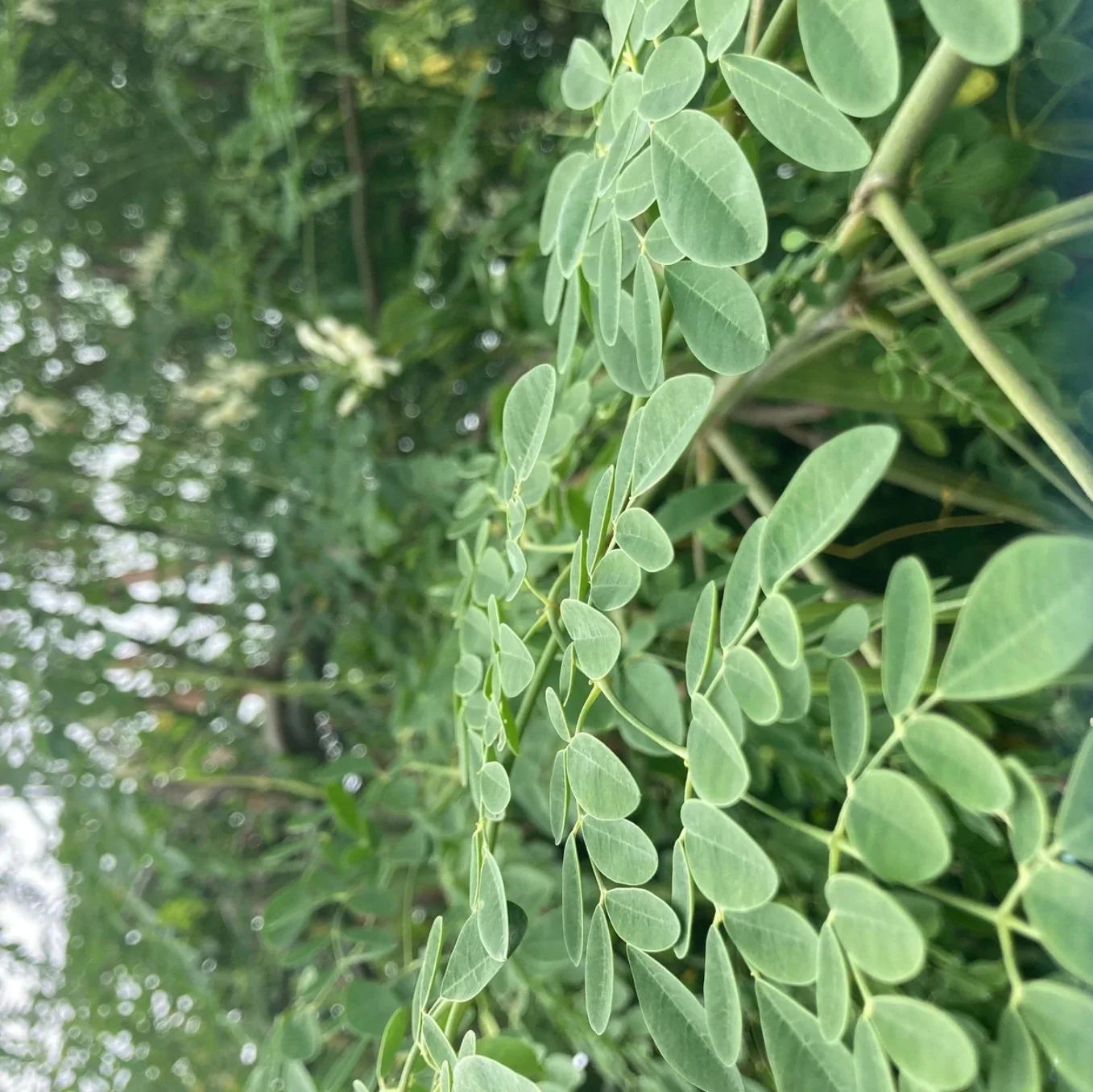Moringa
Moringa oleifera
days to maturity: 90 days
plant spacing: 1 plant every 5 feet
sunlight requirements: 6-14 hours
look out for: root rot and plants being knocked over by wind
harvest notes: coppice whole tree at eye level to keep it low
seasons: spring, summer, fall and winter
perennial
Moringa, aka “Miracle Tree” and “Tree of Life”, is commonly referred to as the “most nutritious leaf in the world”. For centuries it has been used as a system of Ayurvedic and Unani medicine and has a wide range of nutritional and bioactive compounds, including proteins, essential amino acids, carbohydrates, lipids, fibre, vitamins, minerals, phenolic compounds, phytosterols and others. Gram to gram it has 14 times the calcium of milk, 4 times more potassium than bananas, 19 times more iron than spinach, 4 times more fiber than oats, 9 times the protein of yoghurt and 12 times the vitamin C of oranges!
Don’t get too hyped on getting all of your nutritional needs met by this miracle leaf, as excess consumption does upset the stomach, so leaves are best incorporated into your diet in smaller doses. Immature Moringa seed pods, called “drumsticks”, are also used as a vegetable in many part of India. If you are going to eat immature drumsticks we recommend checking out a video or two about their preparation beforehand
Jules, aka The Garden Jules, our in house herbalist says: “Moringa powder is the best thing to have on hand to incorporate more Moringa into your life. I love to blend Moringa with pumpkin seeds, nutritional yeast and seaweed as a salad topping or just make green popcorn with Moringa and nutritional yeast. I love including a handful of fresh Moringa leaves as sprinkles on top of homegrown salads. Moringa is also a delicious pesto or hummus addition because of its slight peppery flavor. Most shockingly of all, I’ve had the most delicious Moringa cookies and muffins!”
The Moringa tree, native to India and other parts of south Asia, grows quite commonly in tropical and subtropical climates. In the Philippines, where it’s called Malunggay, Moringa leaves are cooked regularly. It’s also grown in the Caribbean, the Pacific Islands, Latin America, and across Africa, including Ethiopia and Sudan, where Moringa seeds are used for their water purification properties. Because of its nutritive value and ability to withstand severe drought, Moringa trees have been used to combat malnutrition.
Moringa trees have shallow root systems and very soft bark, so they blow over easily in storms and we think of them as temporary trees, instead of a big commitment like say an avocado or a mango. The University of Florida assesses non- native plants every 10 years and in 2021 Moringa received a “Predicted to be invasive and not recommended by IFAS” classification. So while it is still legal to plant it and it isn’t technically an invasive we wanted you to know that it does have invasive qualities and is likely to become a listed invasive in Florida at some point. We think its nutritional qualities make it worth cultivating, but do so with care and don't let your trees get out of control.

